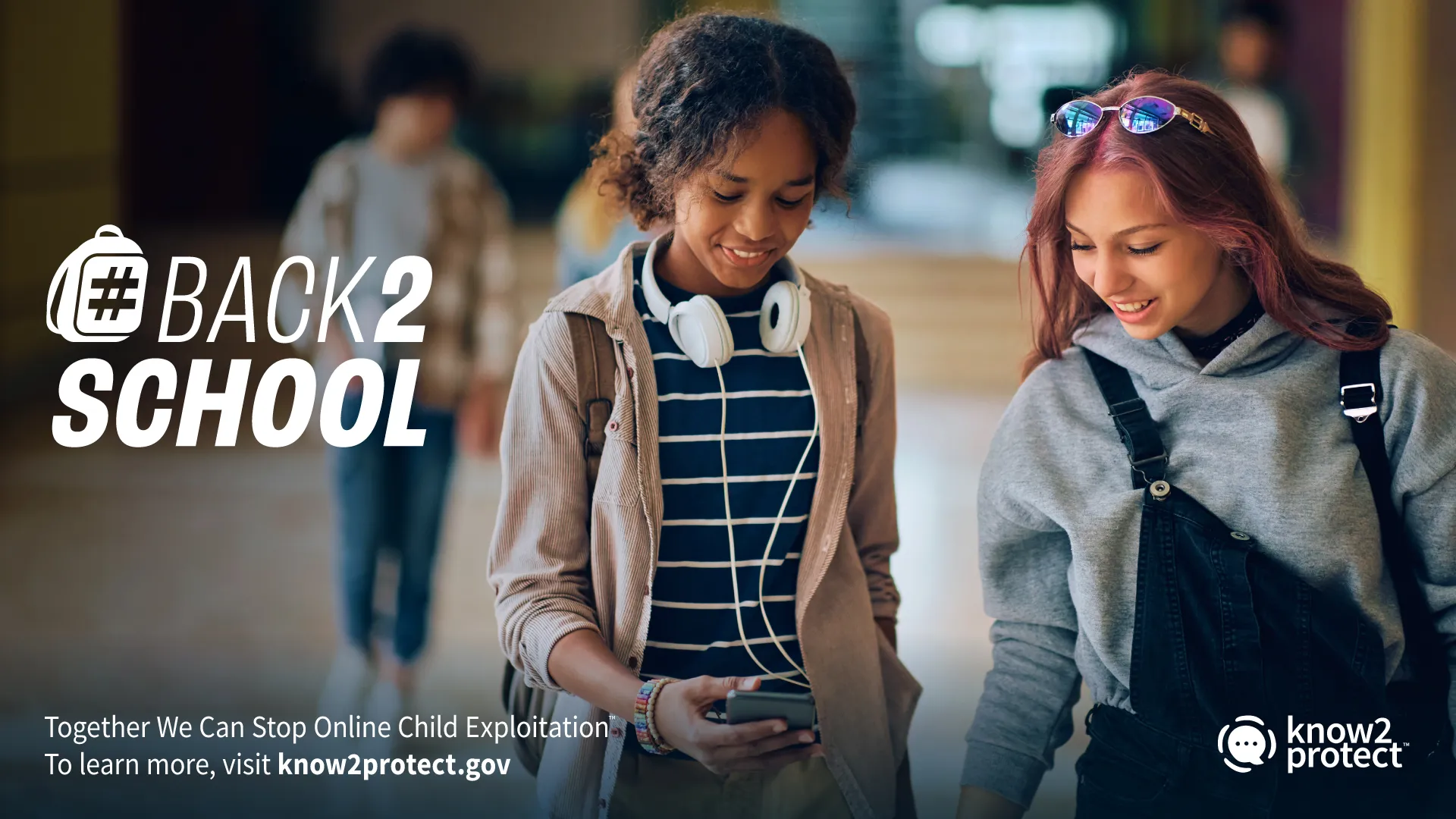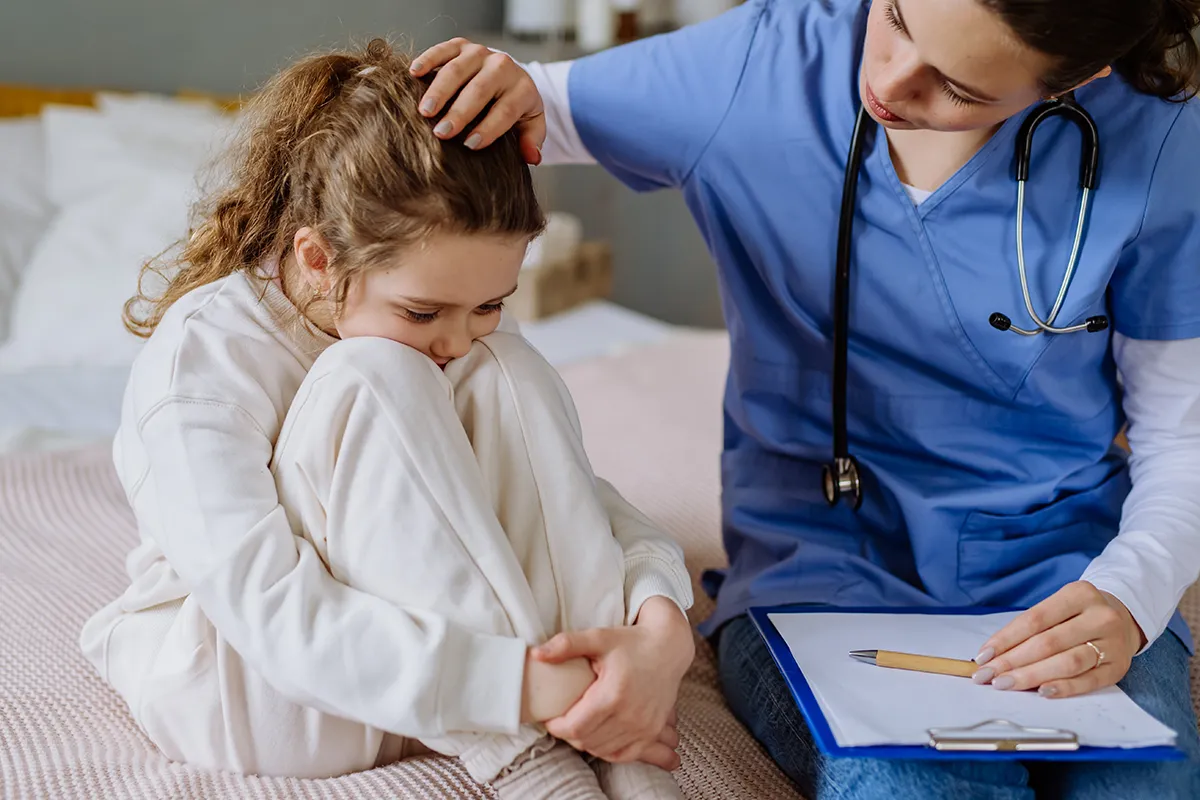As millions of children in the United States return to school, the U.S. Department of Homeland Security Know2Protect initiative has launched a #Back2School campaign to help parents, educators, and trusted adults protect their children against online exploitation.
- Millions of US children return to school in August and September
- 68% of parents will share pictures of their children online
- Social sharing increases the risk of child sexual abuse or exploitation
- #Back2School online safety tips can help protect children
Millions of US Children Head Back to School
Millions of children return to school in the United States in late August and early September. It’s an exciting time for many parents; the new school year signifies a new milestone and a chance to show off how much their children have grown over the summer.
A back-to-school photo is a tradition in many homes and is often accompanied by a sign or board sharing the child’s grade number, school, interests, and hobbies.
Once those back-to-school photos have been captured, they often get shared across social media accounts.
Majority of Parents Share Photos of Children Online
Parents could unknowingly be exposing children to predators through oversharing.
A study published by Secure Data Recovery revealed just how much Americans overshare on social media; according to the survey, 68% of social media users post photos or posts about their children.
As many as 1 in 3 will share details about their child’s first day of school, including what school they will attend and their teacher’s name.
While those back-to-school photos are being seen (and liked) by friends and family members, they may also be seen by complete strangers.
Despite the availability of privacy settings on social media, a large majority (73%) of social media users report not personally knowing everyone who views their posts.
Parental oversharing on social media is so prevalent that a term has been coined to describe it. This term, sharenting, is defined as “the action or practice of sharing news, images, or videos of one’s children on social media websites.”
Social Sharing Increases Risk of Child Abuse or Exploitation
Sharing personal information and photos of children online can put their data, privacy, and safety at risk, making them vulnerable to online exploitation, abuse, harassment, identity theft, and predators.
In 2023, The National Center for Missing & Exploited Children (NCMEC) received over 36 million Cyber Tipline reports of suspected child sexual exploitation.
It may be hard to see how an innocent back-to-school photo could put a child at risk of online exploitation. However, a report from the Internet Watch Foundation warns that new technologies in artificial intelligence are being used to “nudify” images of fully clothed children.
According to reports by NCMEC, half of the photos shared by child sexual abusers were first posted on social media by parents.
#Back2School Safety Tips
You can help decrease the risk of online exploitation by making back-to-school time safer for your children.

Remove Personal Information from Photo Signs
Many of the back-to-school photo signs used by parents include personal information that an online predator could use to entice a child to engage with them on social media or in person. “Fun facts” like names of schools and teachers or a child’s favorite hobbies and interests can all be used by a predator to gain their trust or pretend to be a family friend.
The DHS HSI-ledKnow2Protect campaign to help raise awareness and prevent predator access to children online. Their #Back2School campaign is one way they are helping to protect children by providing parents and caregivers with a new sign to use for first-day-of-school pictures. These signs eliminate possible problematic personal information that could put kids at risk and are safer versions than what many parents currently use.
Download the #Back2School sign template here.
“Children throughout the nation are heading back to school, which means more time away from home where parents can keep a watchful eye over their online activity,” said DHS Cyber Crimes Center Deputy Assistant Director Mike Prado.
“Unfortunately, online child sexual exploitation and sextortion are a real danger to students, which is why DHS has created the Know2Protect Campaign to empower teachers, parents, and other trusted adults with free resources to educate kids and teens on how to identify, avoid and report child predators.”
Find and download #Back2School campaign resources here.
Disable Location Metadata
Most smartphones and cameras have geolocation information embedded in each photo file, known as location metadata. When photos and videos that include location metadata are shared, the people you share them with may be able to access the location metadata and learn where they were taken. You can turn this feature off on your smartphone.
Choose Your Photo Location Carefully
Even with the location metadata turned off, a predator could still find your child’s school or home address through clues left in photos. When taking back-to-school photos of your children, make sure personal identifiers such as your home address numbers or street signs with the name of your street are not visible.
Avoid photos outside of their schools with the school name or address visible. If your child wears a uniform with a school name or logo visible, cover it or blur it before sharing.
Revisit Your Friend List and Privacy Settings
Are you one of the majority of social media users with followers and “friends” who are strangers? It may be time to revisit your friend’s list and privacy settings. If you are going to share photos and posts about your children on social media, you can reduce their risk of being exploited by limiting who has access to them online. HSI special agents want you to know: “Predators go where the kids are.”
Educate Kids About Online Dangers
Help your children understand the dangers of online gameplay, messaging people online, and using social media. Give them tips and guidelines for staying safe online. Help them remove strangers from gaming platforms and social media apps. Find safety tips for kids aged ten and older at K2P Kids. Safety tips for kids aged ten and younger can be found at NetSmartz.
Know How To Report
If you suspect a child is being victimized or exploited online, call the Know2Protect Tipline at 833-591-KNOW (5669). If it is an emergency, call 911.
Learn More at Know2Protect.gov
The best way to protect kids online is with information, and you can learn more at Know2Protect.gov. Know2Protect is a Department of Homeland Security national public awareness campaign to educate and empower children, teens, parents, trusted adults, and policymakers to prevent and combat online child sexual exploitation and abuse, provide information on how to report, and offer resources for victims, survivors, and supporters.
If you share photos or posts of your children on social media, have kids that use the internet, social media apps, or gaming platforms online, or are a trusted adult working with children, provide them with online safety resources and tips. Follow the Know2Protect campaign on Facebook, Instagram, X (Twitter), and YouTube.

